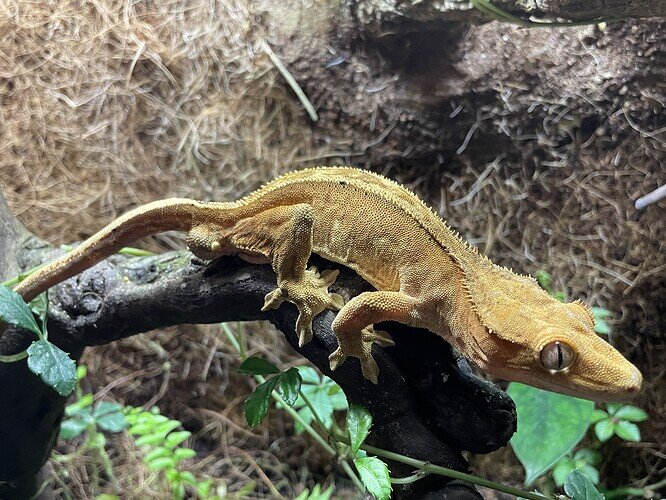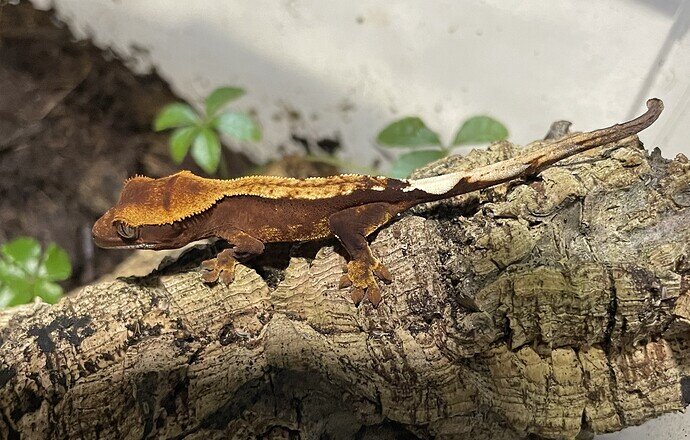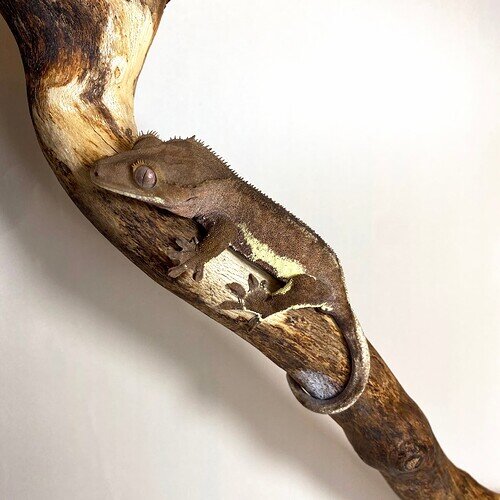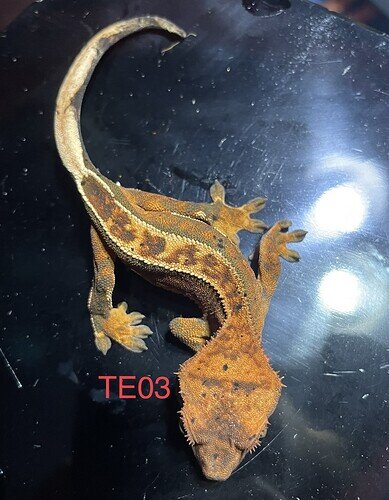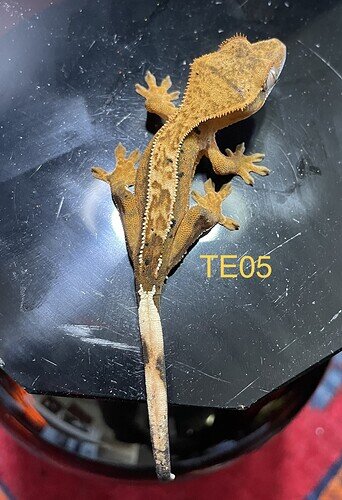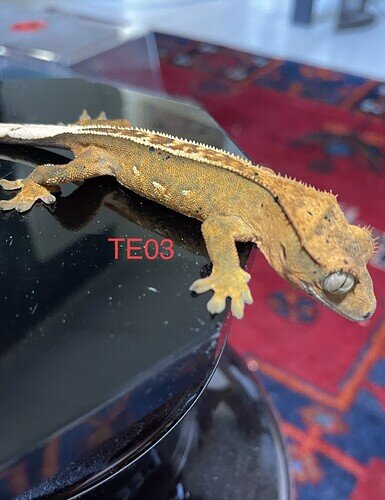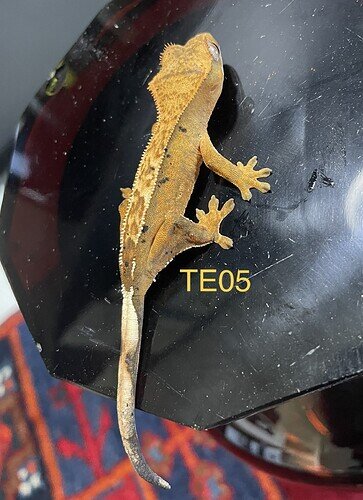Also don’t see red, get some fired up pics.
I would say he is yellow base with heterozygos red base since he has a pink chin, but im not an expert.
He is a little bit more orange in person and he doesn’t get much more fired up than this.
Has he produced any yellows? Since yellow is dominant, he should be producing yellows, especially if he’s been paired with a dark. He does look a bit more orangey in the new photo.
Red babies often look brown when they’re babies, but turn red later on, so it’s too early to tell for sure. If you know the pairing well and know what the red babies they throw look like as babies you can tell earlier on, but yeah.
This is the same gecko at 16g vs 65g
Here are the oldest babies from him that i have, about 8 and 6 gram each. I think they look like orange. And again, the photos are a bit bright, they are darker in reality.
What morph would you say these are?
They look like brindle partial pinstripe with dalmation spots to me.
Do you have any pics from the side? The first one looks like a dark harlequin pos het emptyback with a lot of orange pattern. I would assume the second one is the same based on the hind legs, and cheek, but it’s difficult to tell from the top. Wouldn’t consider either of them brindles though.
Hmm I went down a bit of a rabbit-hole trying to find information about yellow-bases and other geckos to compare them to lol, and my conclusion is that im actually not sure tbh. It might be more obvious fired up, but based on the photos they do seem have a decent amount of grey overall, as well as near the shoulders, which makes me lean towards dark-based with a lot of OP, especially the first one. However, yellow-bases are a bit special from what i could find, sometimes the other bases can show through in certain areas. So to figure out their base, the areas to look are typically the shoulders and the chin, but it seems like yours are dark at the shoulders and orange around the chin so I guess they could also be yellows/oranges with a lot of dark showing through. I wasn’t able to find anything definite as to how much dark/red can show on a yellow though… ![]() I have seen obvious tricolours that did have orange around the chin though, so it seems like the shoulder area is more reliable. However it having pattern around the chin doesn’t seem that common. And compared to the parents it does seem like a lot of pattern, but I have also seen geckos with a ton of pattern from parents with less, so it’s not impossible. I guess it might be more obvious as they get older and grow into their colours, their patterns often get much more obvious with age. Super interesting to look into though, if anyone else genuinely understands the genetics of YB in depth, please share! Besides the fact that it’s dominant, it’s kind of confusing
I have seen obvious tricolours that did have orange around the chin though, so it seems like the shoulder area is more reliable. However it having pattern around the chin doesn’t seem that common. And compared to the parents it does seem like a lot of pattern, but I have also seen geckos with a ton of pattern from parents with less, so it’s not impossible. I guess it might be more obvious as they get older and grow into their colours, their patterns often get much more obvious with age. Super interesting to look into though, if anyone else genuinely understands the genetics of YB in depth, please share! Besides the fact that it’s dominant, it’s kind of confusing ![]()
That’s very informative! I thought the dark pattern Showing through was some sort of weird brindle pattern. You really went in depth but I certainly learned something new now. Where can i find information about crested genetics except lmrepriles foundation genetics? I really want to learn more about their genetics.
Pink chin is blushing. Doesnt look yellow.
Red babies can also hatch red or be orange and go red etc.
Then again reds can also turn lav.
Cresties are fun ![]()
He’s orange.
Visual tigering/brindling doesn’t fire down like the rest of the gecko in my experience, it might chance a little bit but it’s still noticeably darker even when fired down. Also, typically if the gecko carries the red gene, then the visual tigering will be red in my experience. Not sure if it’s true all the time though. In animals with stronger pinstriping, it’ll also typically situate itself more horizontally rather than vertically, like reverse pinstriping, and around the portholes/quadstripes. Neither of them seem to have any noticeable visual tigering though, maybe there’s a little bit around the portholes on the first one?. But yeah my best guess would be that your male is red based (genetically, visually he’s an orangey shade) and the babies are dark-based. Besides LMReptiles, Acreptiles is great! There’s also some videos on Youtube where they talk about the genetics, on the Pangea channel and some podcasts. Other than that, i like to just look through morphmarket and the available albums of breeders on FB, as well as what i’ve made myself and compare the geckos to the information i’ve read and their parents and such.
For sure! Their colour-transformations are so interesting to follow, i feel like they rarely end up like i expect them to, though i am getting better at guessing ![]()
I had a red tricolour here born couple years back now, and I was so happy to keep him as I love mum and wanted a male to hold back. Well He turned lavender… ![]() still adore him though!
still adore him though!
Then we had a red female who changed colour. Could see she’s hypo so was like yay, but Was a shock. (Different parents to Male above). And then got her out the other day and she’s now a lavender.
My Naruto was orange until 9/10 months and then bam red! His 2 daughters here are getting brighter red as they get older too.
Reds an amazing colour to watch for sure! So many varieties of it!! ![]()
